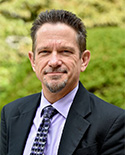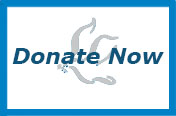
As I sit down and write this, all kinds of thoughts and questions are going through my mind, now that it has been a few months since we began transitioning to social distancing, working from home remotely, churches and faith communities closing up buildings. The question I hear frequently from my students at Fordham, clients in my Lutheran Counseling practice, from friends and family, is, “How long will this go on?” The hope is that we might have a bit more freedom to go about our lives, come the summer months. What about the fall and winter? That seems to be THE question, with predictions that we might have another wave of COVID, until a vaccine is available. The dean of the Graduate School of Religion at Fordham University (my dean!), is taking it seriously enough to inform faculty that we will continue to do our teaching remotely and virtually, not only through the summer session but through the fall semester as well…for the remainder of 2020, in other words. Which just brings to mind other wonderings: what about the spring 2021 semester? Is this the beginning of higher education going more and more online, virus or no virus? Will working from home become the new social norm in general? What is the world going to be like when we finally get to the other side of this? Does anyone really know? The one thing that we can safely assume is that there will be a “new normal.” And what might that look like? On and on it can go, sometimes like a pinball machine in my mind.
I’m trying in the midst of all the social distancing, the sheltering at home, the “quiet time” to actually value the quietude. For example, to keep my mind from pinballing endlessly, to keep my central nervous system from overheating, I have started do meditational practice every day. Sometimes it is breathing meditation, which I did while trekking the Himalayas of Nepal in 2018, other times it is Centering Prayer, the Christian version of meditation. And knowing when to turn off the news coverage, and the never-ending commentary and analysis. Embracing the quiet, even the silence that comes with sheltering at home. It is, after all, where we find God…in the quiet. “Be still, and know that I am God,” writes the Psalmist (Psalm 46). There is plenty of opportunity for that, at the moment. As St. John of the Cross once said, “God’s first language is silence,” to which Thomas Keating, the founder of Centering Prayer, added, “Everything else is a poor translation.” It is in the quiet and silence that we encounter most profoundly the Spirit of the living God, if we can learn to periodically “downshift,” to turn down the volume. Something I am trying to do in these days of distancing and sheltering, to use the time as advantageously as possible. I hope you are as well, for you and I and everyone are in this together.
Grace & Peace,
Kirk Bingaman
.
________________________________________
.
Kirk Bingaman, PhD, MDiv, LMHC, is Associate Professor of Pastoral Care and Counseling in the Graduate School of Religion & Religious Education at Fordham University. An ordained Presbyterian minister, he is a licensed mental health counselor in New York and a Fellow with the American Association of Pastoral Counselors. He holds a PhD in Psychology & Theology from the Graduate Theological Union in Berkeley, CA and a Master of Divinity degree from Princeton Theological Seminary.
In addition to his new book, Pastoral and Spiritual Care in a Digital Age: The Future is Now (Lexington Books, 2018), he also wrote: The Power of Neuroplasticity for Pastoral and Spiritual Care (Lexington Books, 2014). Treating the New Anxiety: A Cognitive-Theological Approach (Jason Aronson, 2007) and Freud and Faith: Living in the Tension (SUNY Press, 2003).


